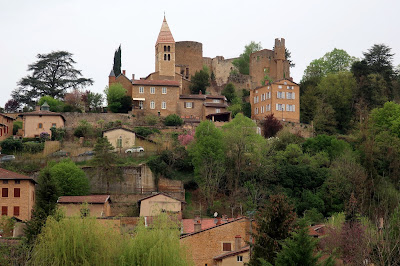Discovering Baeza - Andalucia





Baeza is only a short distance from Cordoba and Granada, but it feels so different. Gone are the white stucco walls and flowers and well-dressed women to be replaced by solid stone buildings and a small town atmosphere.
Baeza is a community of approximately 15,000 people settled on a hill overlooking the olive groves of the Guadalquivir valley. In the distance are the lumpy, low Cazorla mountains. Baeza is a commercial hub for the surrounding farming area so you'll see dusty 4WDs and even ATVs driving up the main street. However, it's also a UNESCO world heritage site (along with the neighbouring town of Ubeda), so there are lots of tourist buses and souvenir stores.
Baeza's strongest economic period was during the Renaissance (1500-1600) when the residents built some magnificent churches, universities and palaces. Later generations didn't have the money and resources to replace them so they have remained more or less intact. But there is a real mix of architecture that is relatively harmonious, reminding me that cities can be organic, living beings. John Gill, author of Andalucia: a cultural history, says that Spain is a relatively modern country in constant dialogue with its past. Perhaps that is why there is such a comfortable blend of styles and ways of life. I wonder if Canadians are ever in a dialogue with their past? I don't think so.
Baeza feels very safe and comfortable. There are teenagers hanging out in the central Paseo, women shopping in the pedestrianized Calle San Pablo, and families and groups of men chatting at El Mercantil, a central cafe (see photo).
The Renaissance university is still offering classes, and there is a lovely cloister and baroque staircase in the Palacio Jabalquinto. The first photo shows the oldest university building - the students used to record their degrees in bull's blood on the wall of the building - hence the "graffiti." Antonio Machado taught here, and you can still visit his classroom.
The church of Santa Cruz is the oldest church, and I enjoyed its simplicity. The Museo A. Moreno (calle Tres Fuentes) had two excellent art exhibits. I really enjoyed looking at Antonio Moreno's portraits, and the temporary exhibit by Raquel Bartolome Robledo made exuberant use of colour. I also enjoyed the cathedral cloister and will post some photos separately. There are some wonderful tiny alleyways with arches that seem to lead in a circle behind the cathedral.
I always try and take the time to really explore a new place so I spent a day and a half wandering around Baeza. I discovered a market near the Plaza de Toros with crowds of women poring over heaps of fabric, shoes strung up on clotheslines, underwear, and piles of blouses. The salesmen were loudly proclaiming that their merchandise was the best and the cheapest.
I watched vans delivering bread to homes and restaurants - if you weren't home, they'd leave a lastic bag of bread attached to the grill on your door. And my next post will introduce you to the sheep and goats grazing just beyond the downtown/residential areas!





Comments